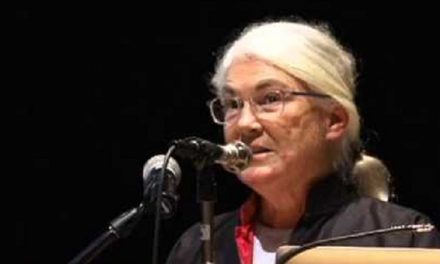As Kevin Hines stood on the Golden Gate Bridge on September 25, 2000, the only word he heard over and over in his head was “jump.” Struggling with mental illness, Hines got a running start and jumped over the rail.
Hines suffered from depression and bipolar disorder and came to the bridge because he thought it would be the simplest way to die. But the second he leaped over the rail, his mind became filled with regret. He maneuvered himself, in midair, so his legs would hit the water first. He shared:
“I’m falling head-first, and I immediately recognize that if I hit head-first, I will die.”
RELATED STORY:
By the time Hines hit the water, he had fallen 220 feet at a speed of approximately 75 miles per hour. The impact from a fall at that speed is comparable to hitting concrete. The impact shattered two of his vertebrae. Doctors later told Hines that he was only 2 millimeters away from severing his spine.
When Hines hit the water he was in agonizing pain. As he struggled to the surface he felt something nudging at him and helping him to the surface. He said:
“I punched it because I thought it was a shark coming to eat me, but it helped me stay afloat until the Coast Guard came.”
He later learned from witnesses that a sea lion was his guardian angel, saving his life that day. (Wow, how incredible.)
RELATED STORY:
After the jump, Hines realized that he needed a meaningful mission. He decided his life moving forward would be devoted to suicide prevention. He and his wife, Margaret, started the Kevin & Margaret Hines Foundation to help educate others about mental health and suicide prevention.
The Golden Gate Bridge is one of the world’s most recognizable structures, but the historic landmark also has a dark history. The Bridge Rail Foundation (a nonprofit dedicated to stopping suicide at public facilities) reports that since the bridge’s opening in 1937:
there have been more than 1,700 confirmed suicides and 300 unconfirmed. The foundation also estimates that, on average, the Bridge Patrol or the California Highway Patrol stops someone from jumping every two or three days.
RELATED STORY:
According to Hines, suicidal tendencies are very hard to escape. He said:
“Emotional pain is 300,000 times worse than physical pain. It’s the enemy within that you cannot defy. When I was on that bridge, the voices in my head were screaming that I had to die.”
The US Centers for Disease Control and Prevention reports that the suicide rate in the United States has gone up 33% in the past twenty years. In the US, it is the second leading cause of death for people ages 10 to 34. For this reason, Hines and his wife, Margaret, started a foundation that attempts to educate and train communities across the country on mental wellness and suicide prevention. Hines said:
“We live in a society of apathy. When people see a stranger in pain, they say, ‘That’s not my problem.’ I disagree.”
Hines knows this all too well. In fact, he made a pact with himself on the day he attempted suicide. He said to himself that if anyone engaged him, asked whether he was OK, then he would not jump. Unfortunately, no one spoke up and noticed his pain that day. Hines added:
“If you see someone in pain, it’s your duty to walk up and engage and just try to get them to open up to you and try to share what is going on in their mind. You can be a conduit for change.”
RELATED STORY:
Since that day in 2000, the Bridge Rail Foundation says that 571 people have died jumping from the Golden Gate Bridge. However, that number will hopefully decrease significantly soon, because the safety net that Hines has fought for is finally under construction, and set to be complete in 2021.
Hines was moved to tears when he saw parts of the net for the first time. He shared:
“That bridge is a harbinger of death, as beautiful as it is, but it won’t be after 2021.”
“This is one of the most special days of my life.”
How to get help: In the US, call the National Suicide Prevention Lifeline at 1-800-273-8255. The International Association for Suicide Prevention and Befrienders Worldwide also can provide contact information for crisis centers around the world.
Source:
Please get on our update list today, as social media is strangling our reach: Join here: http://healthnutnews.com/join THANK YOU!












